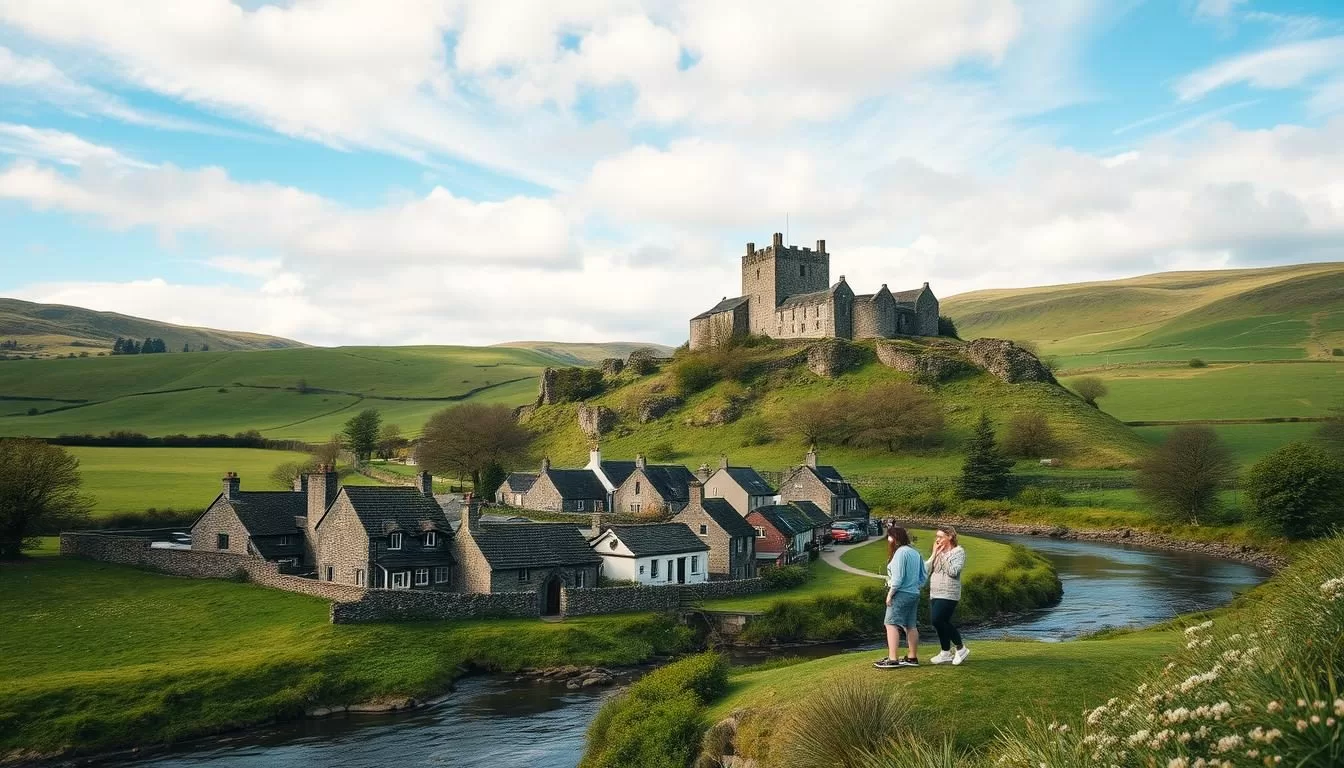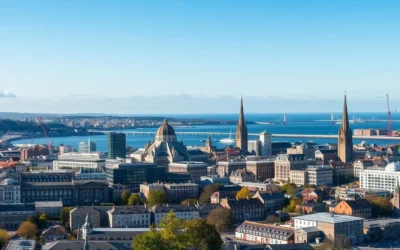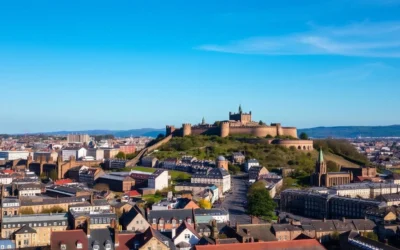✓ Accommodations✓ Flights✓ Rental Cars
When you think of Scotland, its rich culture and history often come to mind. At the heart of this identity is the language spoken by its people. English is the most common language here, used in daily life, education, and government. Over 90% of the population relies on it as their main language.
But Scotland’s linguistic landscape is more diverse than you might expect. Alongside English, regional languages like Scots and Scottish Gaelic play a significant role. These languages are deeply tied to the country’s history and cultural heritage.
Understanding the role of language in Scotland gives you insight into its people and traditions. Whether it’s the dominance of English or the preservation of indigenous languages, each tells a unique story.
Introduction to Scotland’s Linguistic Diversity
The linguistic tapestry of this region is a fascinating blend of history and modernity. Over the centuries, the way people communicate has evolved, shaped by cultural shifts and external influences. Today, you’ll find a rich mix of dialects and languages that tell the story of its people.
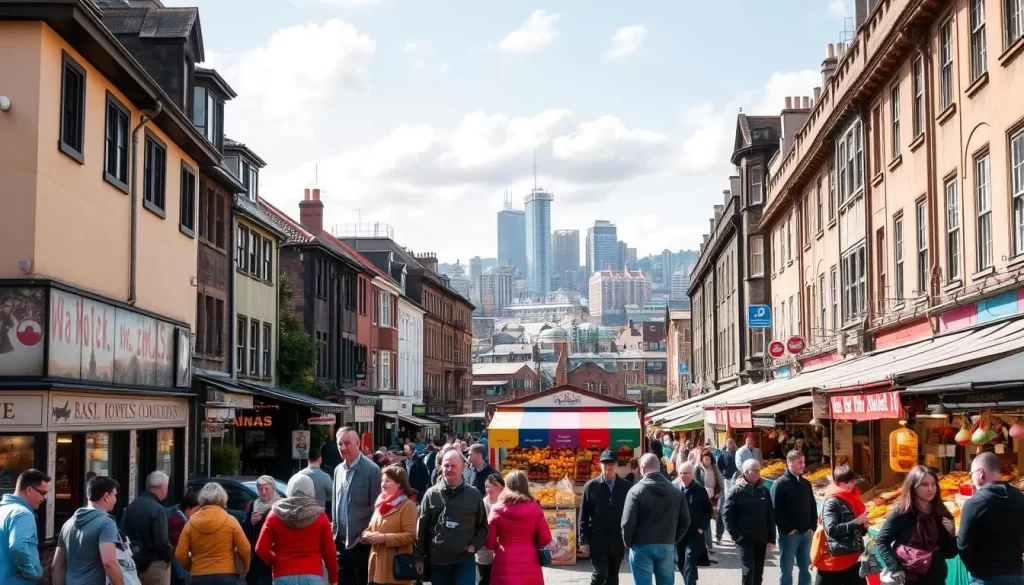
Historical Context of Language
Centuries ago, early forms of English and Celtic tongues laid the foundation for modern dialects. These languages were deeply tied to family and community, passed down through generations. By the 11th century, Northern English began to influence the region, giving rise to unique variations.
For example, Scottish Gaelic, with roots in the fifth century, was once widely spoken. Though its numbers have declined, it remains a vital part of cultural identity. Similarly, the Welsh language highlights the shared Celtic heritage of the area.
“Language is the road map of a culture. It tells you where its people come from and where they are going.”
Modern Trends and Multicultural Influences
In recent years, global migration has introduced new languages to the region. Immigrants have brought their native tongues, enriching the linguistic landscape. Over 170 languages are now spoken, reflecting the diversity of its population.
Here’s a snapshot of the most common languages today:
| Language | Speakers |
|---|---|
| English | Over 90% |
| Scots | 1.5 million |
| Scottish Gaelic | 60,000 |
| Arabic | Growing number |
| Polish | Significant community |
Despite the dominance of English, minority languages like Scots and Gaelic continue to thrive. Efforts to preserve these dialects, such as bilingual road signs and dedicated TV channels, highlight their importance to the community.
English: The Dominant and Official Language in Scotland
English plays a central role in shaping the daily lives of people in this region. It’s the main language used in government, education, and everyday interactions. Over 90% of the population identifies it as their primary means of communication.

Role in Government, Education, and Daily Life
In government, English is the official language for public documents and legal proceedings. Schools and universities also rely on it as the medium of instruction. This ensures consistency across the country.
In workplaces and social settings, English is the go-to language. It bridges gaps between different communities and fosters clear communication. Whether you’re in a bustling city or a quiet town, you’ll find it widely spoken.
Regional Dialects and Variations Across the Country
While English is dominant, regional dialects add unique flavors to the language. For example, Scottish Standard English blends local accents with standard grammar. This creates a distinct identity for each area.
Some regions have their own localized forms of English. These variations reflect the rich cultural and historical influences of the area. They also highlight the adaptability of the language.
Despite these differences, English remains the unifying thread. It connects people across the country and ensures smooth communication in every corner.
Scots Language: Identity, History, and Cultural Expression
The Scots language is a vibrant thread in the cultural fabric of its region. It’s more than just a way to communicate—it’s a marker of identity and pride for many communities. With roots stretching back centuries, this minority language carries a rich history and a unique literary tradition.

Cultural Significance and Literary Heritage
Scots has long been a symbol of cultural expression. From poetry to prose, it has shaped the artistic landscape of its area. Writers like Robert Burns have immortalized the language, showcasing its beauty and depth. This literary heritage continues to inspire new generations.
The influence of Celtic language traditions is evident in Scots. It blends elements of older dialects with modern forms, creating a distinct dialect English. This mix reflects the region’s diverse history and cultural evolution.
“Language is the soul of a people, and Scots is the heartbeat of our heritage.”
Families and communities play a vital role in keeping Scots alive. Many person speak it at home, passing it down through generations. This practice ensures the language remains a living part of daily life.
Today, over 1.5 million people identify as Scots speakers. Efforts to preserve the language, such as bilingual education and media, highlight its importance. These initiatives ensure that Scots continues to thrive as a cultural treasure.
Scottish Gaelic: The Celtic Heritage and Revival
Scottish Gaelic carries the legacy of a Celtic past, weaving history into modern life. This indigenous language is a vital part of cultural identity, connecting families and communities across generations. While its number of speakers has fluctuated over time, efforts to revive and preserve it are gaining momentum.
Ancient Roots and Historical Importance
With origins in the Celtic language family, Scottish Gaelic has deep historical roots. It was once the primary language spoken in the Highlands and Islands, shaping the region’s culture and traditions. Over centuries, external influences led to a decline, but its legacy remains strong.
Today, Gaelic is recognized as an official language, symbolizing its enduring importance. Its preservation is a testament to the resilience of cultural heritage. For many residents, it’s more than a language—it’s a way of life.
Revival Efforts and Contemporary Usage
Revival initiatives are breathing new life into Scottish Gaelic. Schools now offer Gaelic-medium education, ensuring children grow up bilingual. Community programs and media platforms also play a key role in promoting its use.
Here are some key efforts driving the revival:
- Gaelic-medium schools and educational resources.
- Government support for indigenous language preservation.
- Cultural events celebrating Gaelic traditions.
According to recent data, over 69,000 people speak Gaelic, with many more learning it as a second language. This growing number of speakers reflects the community’s commitment to keeping the language alive.
“Language is the heartbeat of a culture, and Gaelic is the pulse of our heritage.”
For visitors and residents alike, Scottish Gaelic offers a unique window into the region’s history and identity. Whether through music, literature, or daily conversation, it continues to shape the cultural landscape. To learn more about its evolution, explore Scottish Gaelic.
Scotland, United Kingdom: Official and widely spoken languages – An In-Depth Look
The linguistic diversity of this region reflects a dynamic blend of tradition and modernity. From indigenous tongues to migrant dialects, the language landscape is rich and ever-evolving. This section explores how globalization has shaped communication and the role of minority languages in preserving cultural identity.
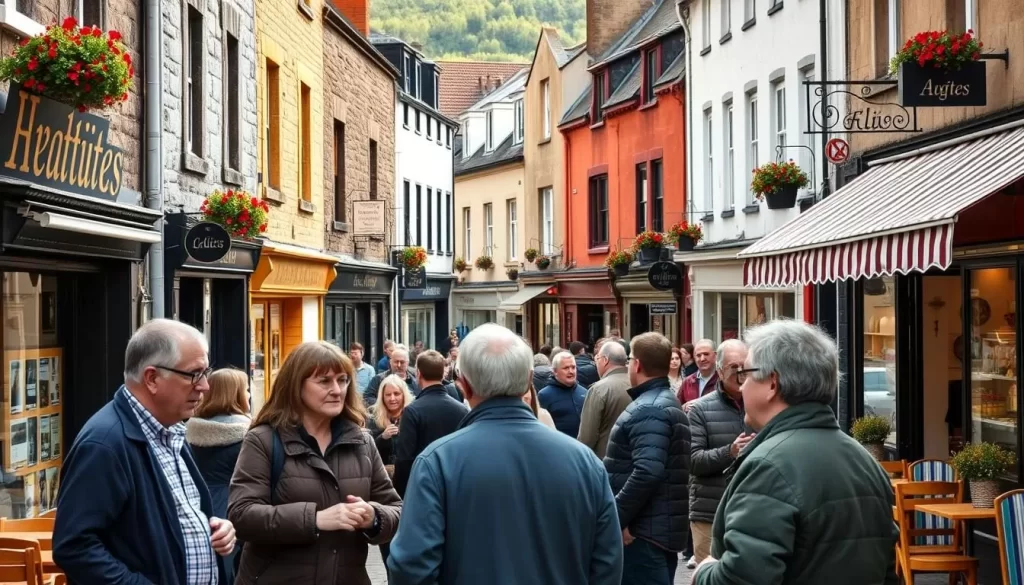
Diversity Among Indigenous and Migrant Languages
This area is home to a mix of indigenous languages and those brought by immigrant communities. While English dominates, other minority languages like Scots and Gaelic hold cultural significance. Over 150 languages are spoken, reflecting the region’s multicultural population.
Immigrant communities have introduced languages like Polish, Urdu, and Punjabi. These language spoken variations enrich the cultural fabric, creating a vibrant multilingual society. Schools and community programs often support bilingual education, ensuring these dialects thrive.
The Impact of Globalization on Local Language Practices
Globalization has transformed how people communicate. The influx of immigrants has increased the number of languages spoken, while technology has made it easier to connect across borders. This has led to a blending of dialects and the rise of hybrid forms of communication.
Local dialect variations have adapted to global influences, creating unique linguistic identities. For example, British Sign Language is now recognized as an official language, ensuring inclusivity for all communities.
“Language is the bridge that connects cultures, and globalization has made that bridge stronger than ever.”
Efforts to preserve indigenous languages include school programs and second language initiatives. These ensure that future generations continue to value and use these dialects. To learn more about this fascinating topic, explore linguistic diversity.
The Role of Regional Dialects and Local Identities
Regional dialects are more than just words—they’re a reflection of local identity and pride. These unique ways of speaking connect people to their community and culture, creating a sense of belonging. Whether it’s the way a person speaks or the phrases they use, dialects tell a story of history and heritage.
Unique Variants Such as Doric in Aberdeen
In Aberdeen, the Doric dialect is a prime example of how language shapes local identity. This language dialect is deeply rooted in the area’s history, with distinct vocabulary and pronunciation. For many, speaking Doric is a way to celebrate their culture and preserve traditions.
Families often pass down this dialect to their children, ensuring it remains a living part of the community. Schools in the area also play a role by teaching Doric as a second language. This helps younger generations connect with their roots.
How Dialects Enhance Cultural and Social Identity
Dialects do more than just define how a person speaks—they strengthen social bonds. In many community settings, using a local dialect fosters trust and camaraderie. It’s a way to show you’re part of the family.
For immigrants, learning a regional dialect can help them integrate into their new community. It’s a way to bridge cultural gaps and build connections. As one study notes, “Language is the bridge that connects cultures, and dialects are the bricks that build it.”
Efforts to preserve these dialects, such as bilingual education and media, highlight their importance. They ensure that future generations continue to value and use these unique forms of communication. To learn more about the fascinating world of dialects, explore regional dialects and their impact.
Conclusion
The linguistic landscape here is a vibrant mix of history, culture, and identity. From the dominance of English to the preservation of indigenous languages like Gaelic and Scots, each dialect tells a unique story. These languages connect people to their roots, fostering a sense of belonging in every community.
Efforts to revive and protect minority languages are ongoing. Schools, media, and government initiatives play a crucial role in keeping these dialects alive. This ensures future generations can continue to celebrate their heritage.
With over 170 languages spoken, the region reflects a multicultural society. Immigrant contributions have enriched the linguistic fabric, making it a hub of diversity. To learn more about these efforts, explore language preservation strategies.
Language is more than communication—it’s a bridge to history and identity. Whether you’re a native speaker or a newcomer, it unites everyone in this dynamic, multilingual community.
The above is subject to change.
Check back often to TRAVEL.COM for the latest travel tips and deals.
